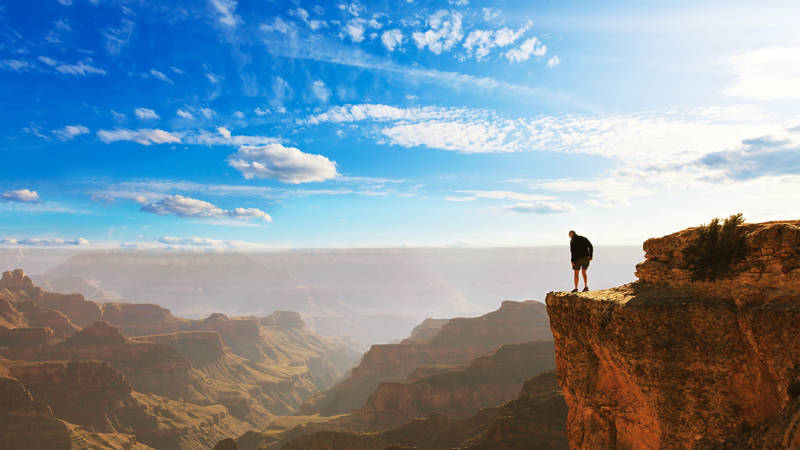Regional Haze
Clear Solutions for Parks
Clear Solutions for Parks
Reducing haze pollution to protect parks & communities
Millions of people visit U.S. national parks and wilderness areas each year to see some of the most awe-inspiring views in the world. Visitors imagine national parks as having the freshest air for exploring, relaxing and sharing memories. But over the decades, haze pollution has degraded visibility and harmed public health in our parks and surrounding communities.
In the fight for healthy air, laws limiting haze pollution are powerful tools—but we need to act now to sharpen them. To win the fight for clean and healthy air,…
See more ›While most haze pollution does not originate in national parks, it can travel hundreds of miles from its original source (industrial facilities, vehicles, oil and gas development, etc.), affecting parks and communities along the way. In fact, 98% of national parks suffer from hazy skies, and on average, park visitors miss out on 50 miles of scenery because of haze pollution — a distance equal to the length of Rhode Island.
Haze pollution not only ruins scenic views and threatens public health, but also endangers local economies that depend on parks, which provide $55.6 billion in economic output each year and support thousands of jobs across the country. Studies show that park visitation drops when air pollution is high, indicating the direct effect air quality has on the visitor experience.
Haze pollution also has harmful and disproportionate consequences on communities of color and low-income communities that often live closest to the polluting sources and face chronic environmental injustices. Air pollution worsens community health and drives up healthcare costs, while also impacting park rangers and visitors and making it harder for kids to learn and play and adults to work.
Fortunately, certain national parks and wilderness areas are specifically protected from air pollution thanks to bipartisan clean air laws established decades ago. NPCA works together with state and federal agencies, and local partners, to limit haze pollution and restore clear skies at parks such as Yosemite, Grand Canyon, Mammoth Cave and Great Smoky Mountains.
While most haze pollution does not originate in national parks, it can travel hundreds of miles from its source – coal plants, vehicles and oil and gas operations are the…
See more ›Much of the country’s air pollution comes from extracting, developing and burning fossil fuels, whether by coal-fired power plants for electricity generation, use of gas-powered cars and trucks, or oil and gas operations. Many of the worst haze polluters in the country continue to be coal-fired power plants, some with no pollution controls and many with controls that don’t operate efficiently or year-round.
The same sources of pollution harming our communities are also fueling the climate crisis, and the consequences are alarming. While all parks face the consequences of a rapidly warming planet, according to NPCA’s 2024 Polluted Parks analysis, 57% of parks face distinct and severe risks from at least one of four ‘high risk’ climate threats including drought, sea level rise, wildfires and invasive species.
To achieve strong plans to reduce haze pollution, we need help from park advocates like you! Whether submitting written comments to EPA or your state on your state’s proposed regional haze plan or testifying at a virtual public hearing, your voice can and will make a difference.
NPCA, and our partners around the country, have engaged in nearly all of the available state and EPA public comment periods to date. We have engaged our members and supporters to get their voices heard at public hearings and through comment letters. NPCA has also engaged directly with EPA Regional Offices in nearly every EPA region. Please join our email list to be notified when there are opportunities to advocate for clean air and clear skies!
Our email newsletter shares the latest on parks.
